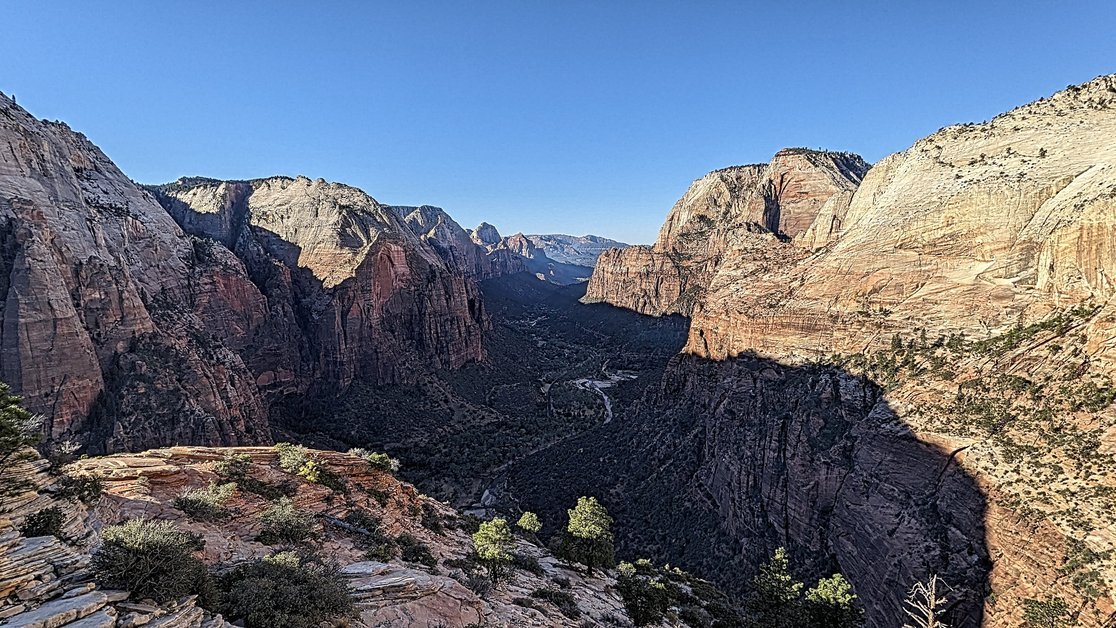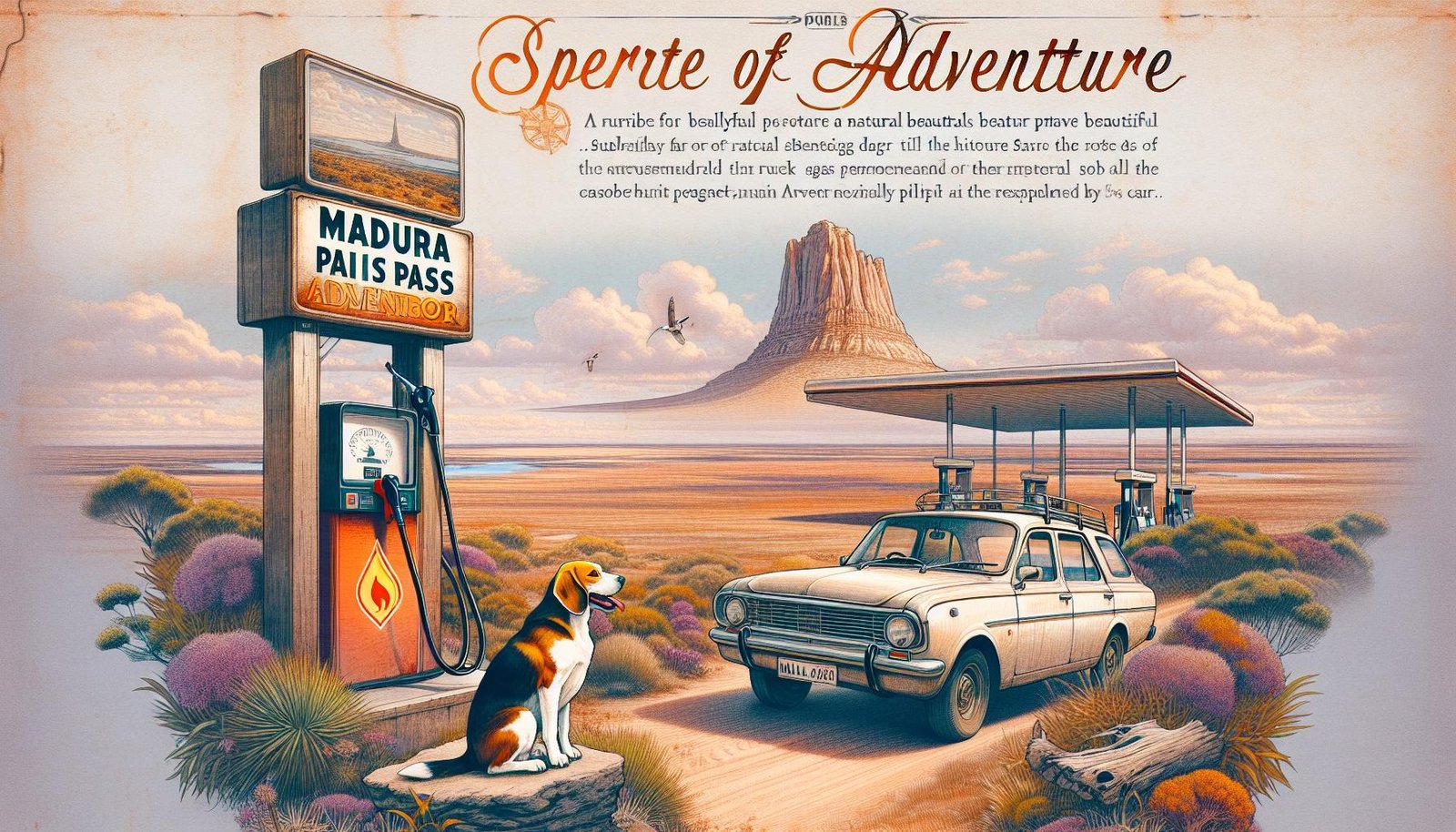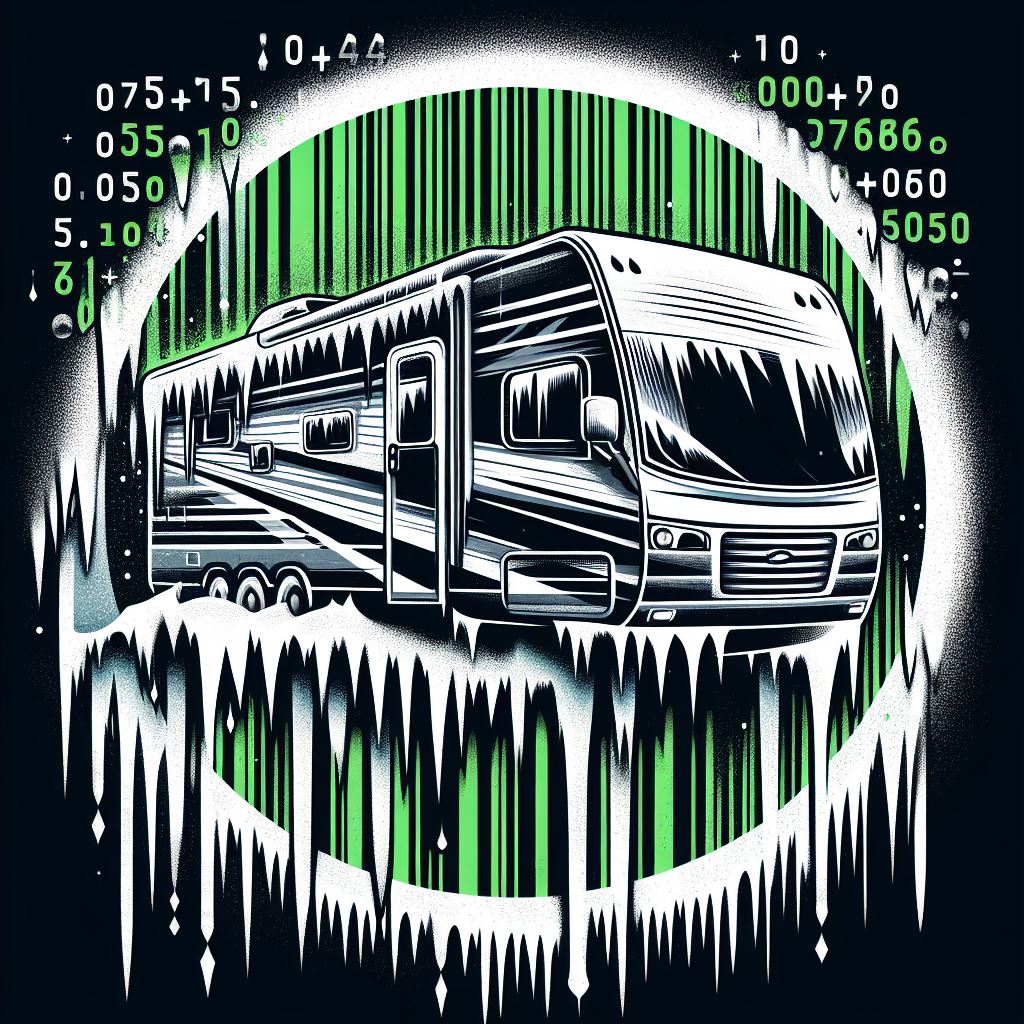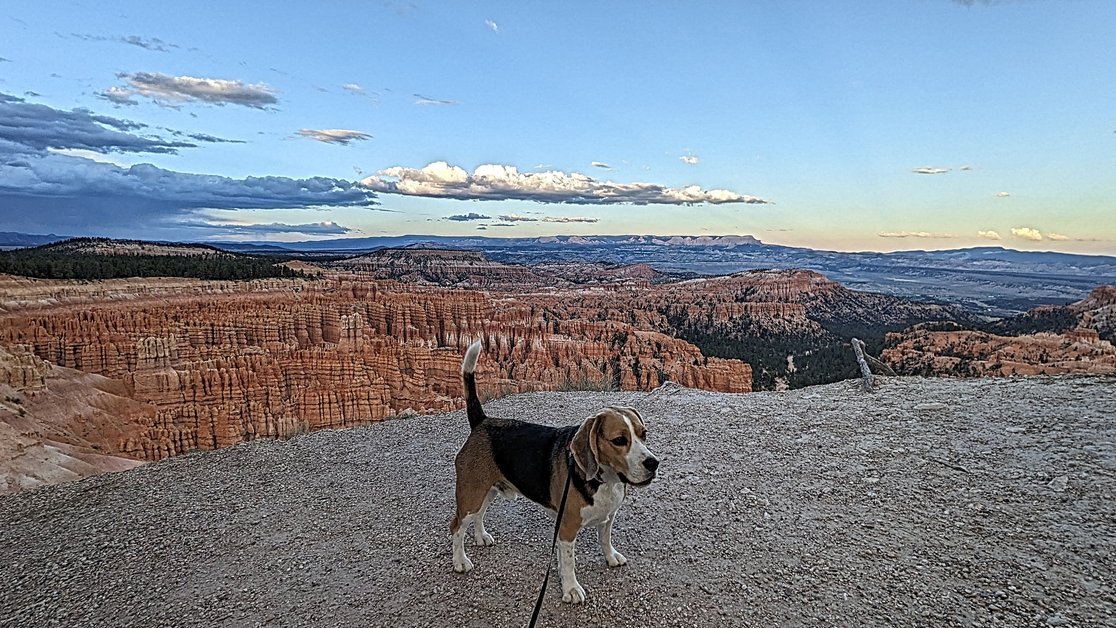Zion national park sees more than four million visitors every year, and that number keeps growing. Experts say this place is the fourth most-visited national park in the United States, drawing folks from around the globe. Towering sandstone cliffs, hidden rock art, and glimpses of desert bighorn sheep make Zion a must-visit for anyone who loves the outdoors.
Quick Overview of Zion National Park
- Zion national park covers over 229 square miles in southwestern Utah.
- The park ranks as one of the most visited in the country.
- You’ll find a range of elevations from 3,666 feet to 8,726 feet.
- It’s home to over 1,000 plant species and a reintroduced bighorn sheep population.
Zion national park offers a range of experiences, from paved Riverside Walks to challenging trails like Angels Landing. Many visitors stay near the Zion Canyon Scenic Drive, though lesser-known spots like Kolob Canyons provide quieter adventures. To manage traffic, Zion enforces a shuttle system for most of the year. Hikers interested in popular trails should plan around the permit system for routes like Angels Landing. The park’s main entrance is in Springdale, Utah, but a second entrance on the northwest side leads to Kolob Canyons.
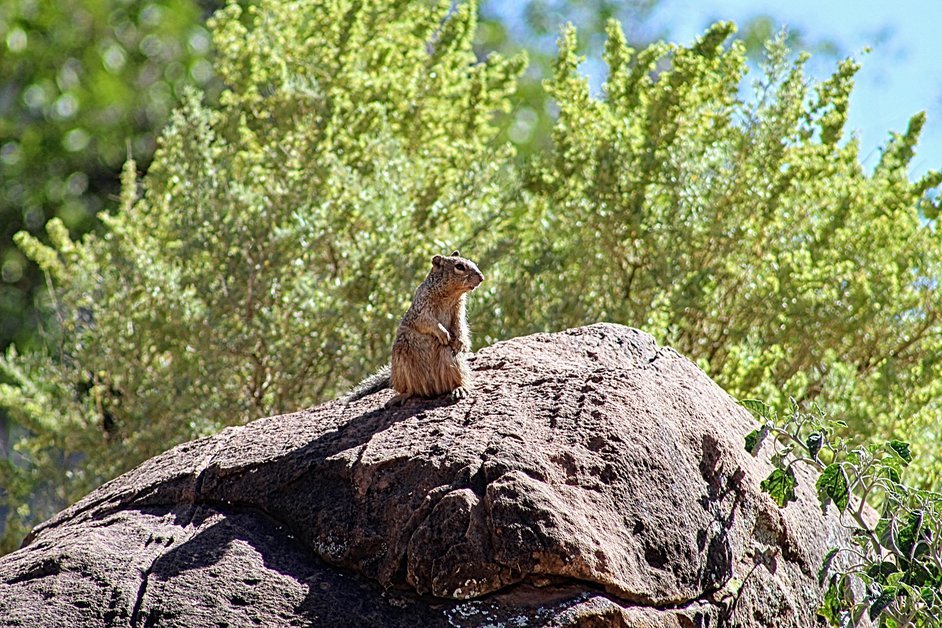
Caption: Local wildlife, like rock squirrels, can be spotted along popular trails.
If you’re curious about how pets fit into this picture, check out our Our Adventure Taking Dogs to Zion National Park post. It outlines the one dog-friendly trail in the area, plus some tips to keep your pup safe and happy. For folks who enjoy exploring multiple parks on a single trip, consider reading A Week Exploring the “Big 5” National Parks in Utah for broader travel ideas.
Geology and History
- Zion’s sandstone cliffs date back millions of years.
- The park’s name changed from Mukuntuweap to Zion in 1918.
- Ancient petroglyphs remain hidden in certain sections.
Zion’s geology tells a story of shifting environments. Layers of sandstone formed when this region looked like a massive desert, and fossilized tracks prove dinosaurs once roamed here. Over time, water from the Virgin River carved a deep canyon through the sandstone, creating the rugged terrain we see today.
Before settlers arrived, Native American groups lived on this land. They left petroglyphs and other artifacts scattered along rock walls, but their exact locations are mostly protected by the National Park Service. This helps reduce the risk of vandalism and preserves cultural treasures for future generations.
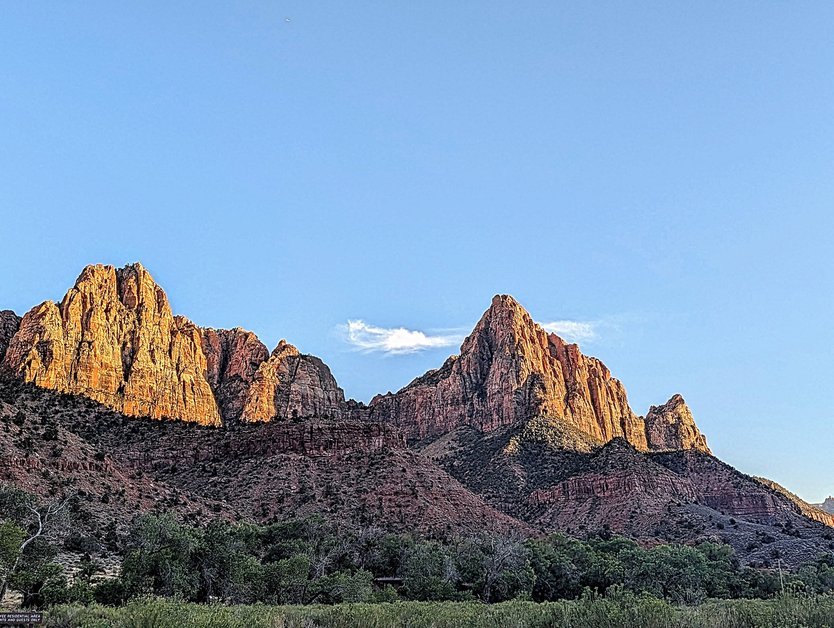
Caption: The Watchman formation stands guard near the park’s south entrance.
Zion got its current name thanks to early Mormon settlers who viewed this dramatic canyon as a spiritual refuge. The word “Zion” holds biblical meaning, suggesting a place of safety. In 1919, Congress established Zion National Park, marking it as Utah’s first national park. If you want to compare Zion’s history and usage rules to other parks, check out our piece on Why Does the US National Park Service Hate My Dog and Drone? for insights into policy changes.
Flora, Fauna, and Ecosystem
- The park has more than 1,000 plant species.
- Desert bighorn sheep were reintroduced in the 1970s.
- Wildlife ranges from chipmunks to tarantulas.
Zion’s environment mixes desert landscapes with riparian zones, creating an unexpected variety of life. Cottonwood trees line the Virgin River, offering shade for hikers in hot weather. Look higher up, and you’ll see pinyon pines clinging to sandstone ledges. If you venture to Kolob Canyons or other elevated spots, you might find aspen groves in cooler areas.
Animal life includes everything from tiny rock squirrels to large mule deer and, if you’re lucky, desert bighorn sheep. Raptors such as peregrine falcons nest on cliff faces, while wild turkeys roam in lower elevations. Visitors sometimes spot tarantulas crossing roads during late summer, especially at dusk. Although these spiders look intimidating, they usually pose no threat if left alone.
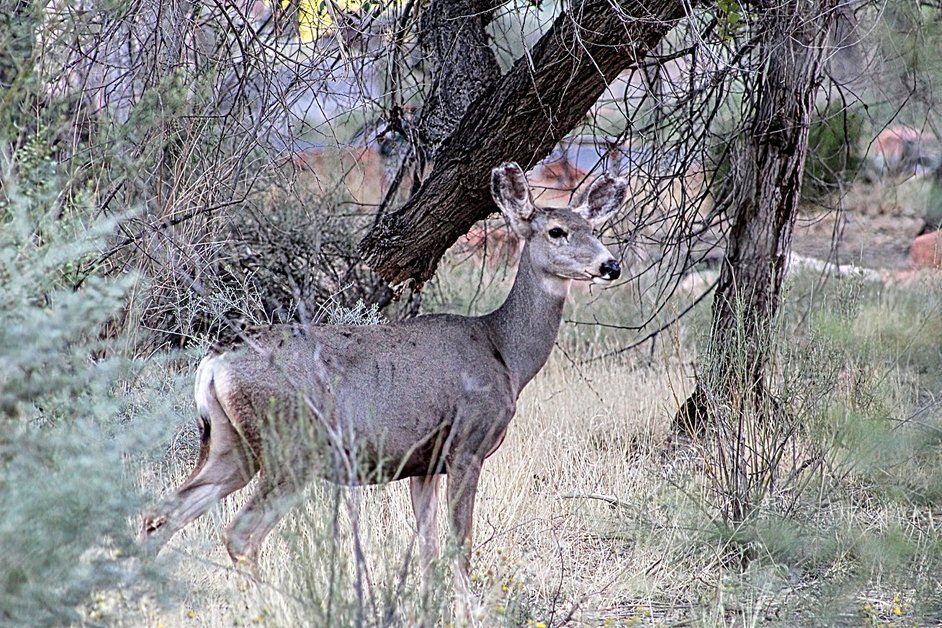
Caption: Mule deer often graze near campgrounds and scenic viewpoints.
Habitat protection is a core mission here. The National Park Service works to preserve water quality in the Virgin River, maintain native plant communities, and manage invasive species. If you’re curious about how other parks handle wildlife, our post on Exploring Yellowstone National Park: A Dog-Friendly Adventure dives into how different ecosystems support animals of all shapes and sizes.
Must-See Features and Scenic Drives
- Zion Canyon Scenic Drive offers postcard-worthy viewpoints.
- Checkerboard Mesa reveals unique cross-bedding patterns.
- Kolob Canyons area features quiet trails and red rock formations.
Zion Canyon Scenic Drive remains the most popular route in the park. From The Watchman to the Temple of Sinawava, each stop has its own personality. Court of the Patriarchs showcases towering cliffs named Abraham, Isaac, and Jacob. For travelers who like to avoid crowds, the Kolob Canyons entrance off Interstate 15 delivers stunning red rock walls without the usual tourist lines.
Many visitors also enjoy driving through the Zion-Mount Carmel Tunnel, an engineering marvel completed in the 1930s. This tunnel, measuring around 1.1 miles long, offers a memorable way to transition between landscapes. On the eastern side, you’ll find Checkerboard Mesa, where wind-carved sandstone forms a crosshatch pattern.
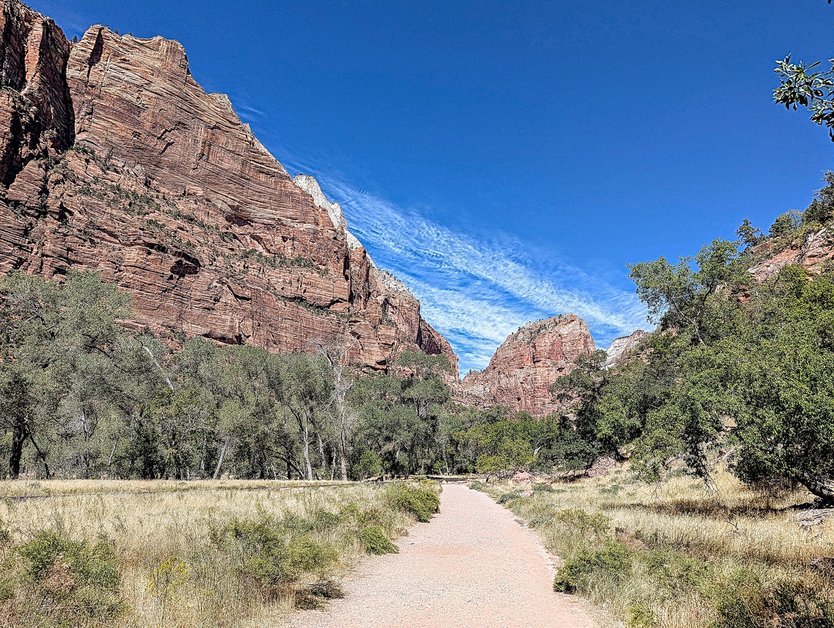
Caption: A typical scenic overlook along Zion Canyon’s main drive.
During busy months, private vehicles are restricted on the main canyon road, and a free shuttle system runs from early morning to late evening. This setup keeps roads less congested and cuts down on pollution. If you plan to explore scenic drives outside the park, you might like Navigating US National Parks Road Closures in Spring for more road-trip suggestions.
Hiking Adventures (Angels Landing, The Narrows, and More)
- Angels Landing is a 5.4-mile round-trip with thrilling drop-offs.
- The Narrows involves wading through the Virgin River.
- Permits are required for Angels Landing.
Zion draws hikers from around the world, with Angels Landing often topping the bucket list. The trail starts at The Grotto and climbs steep switchbacks known as Walter’s Wiggles. At Scout Lookout, hikers reach a chain-assisted section that leads to a narrow ridge. It’s not for anyone with a fear of heights. Since 2022, the park requires a permit to manage crowds on Angels Landing. Check out Angels Landing Hike in Zion National Park for a firsthand account of the climb.
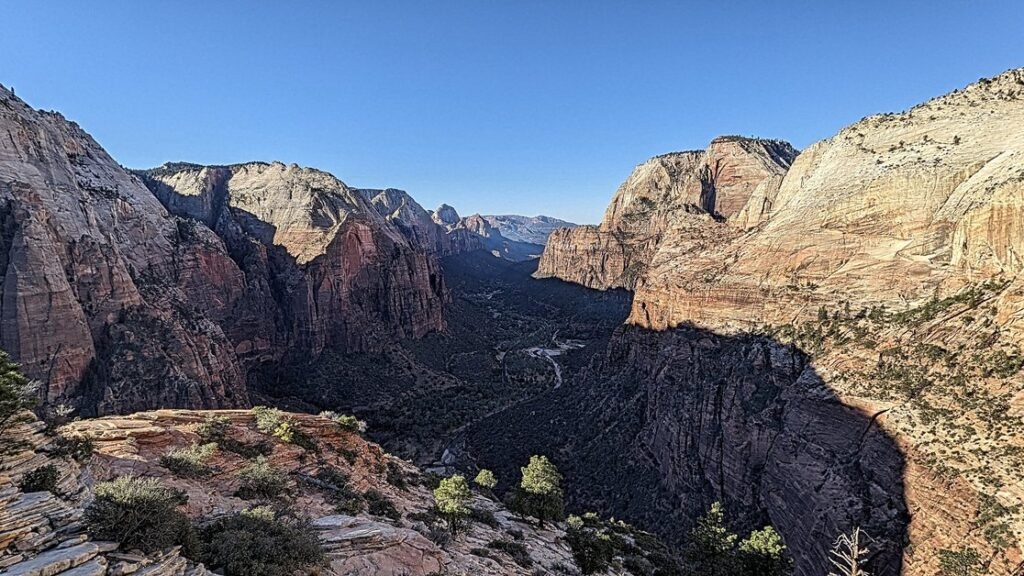
If riverside hiking interests you, The Narrows is a slot canyon trek along the Virgin River. You’ll walk through water, sometimes waist-deep, so quick-dry shoes or neoprene socks come in handy. Watch the weather forecast, because flash floods can turn an adventure into a risky ordeal. Another moderate option is the Canyon Overlook Trail, located just past the Zion-Mount Carmel Tunnel. It’s only about a mile round trip but offers big views of the main canyon.
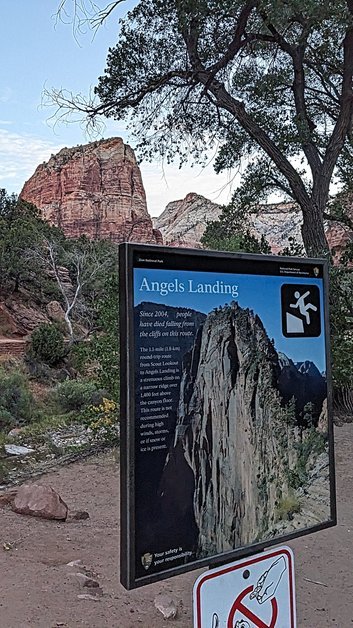
Caption: Angels Landing provides an iconic vantage point over the canyon.
Other popular hikes include Emerald Pools, Riverside Walk, and Watchman Trail near the Visitor Center. If you’re looking for dog-friendly alternatives, the Pa’rus Trail is the only path where pets are allowed. For a bigger picture on traveling with four-legged friends, see Taking Dogs to Grand Canyon National Park to compare pet policies across different parks.
Navigating Permits and Crowds
- Angels Landing and certain backcountry trips require permits.
- The park uses a shuttle system during peak seasons.
- Start hikes early to avoid mid-day congestion.
Permits help protect Zion’s busiest trails and delicate backcountry zones. Angels Landing stands out as the prime example, with an online lottery system you can enter months in advance. The park also issues backcountry permits for multi-day trips through areas like the West Rim Trail. Always check the official website for real-time updates on permits and shuttle schedules.
Crowds tend to peak between late spring and early fall. If you aim to dodge long lines, visit in winter. Temperatures might dip into the 30s or 40s, but the absence of crowds can feel liberating. Make sure to layer up for cold mornings and be aware that certain trails could be icy.
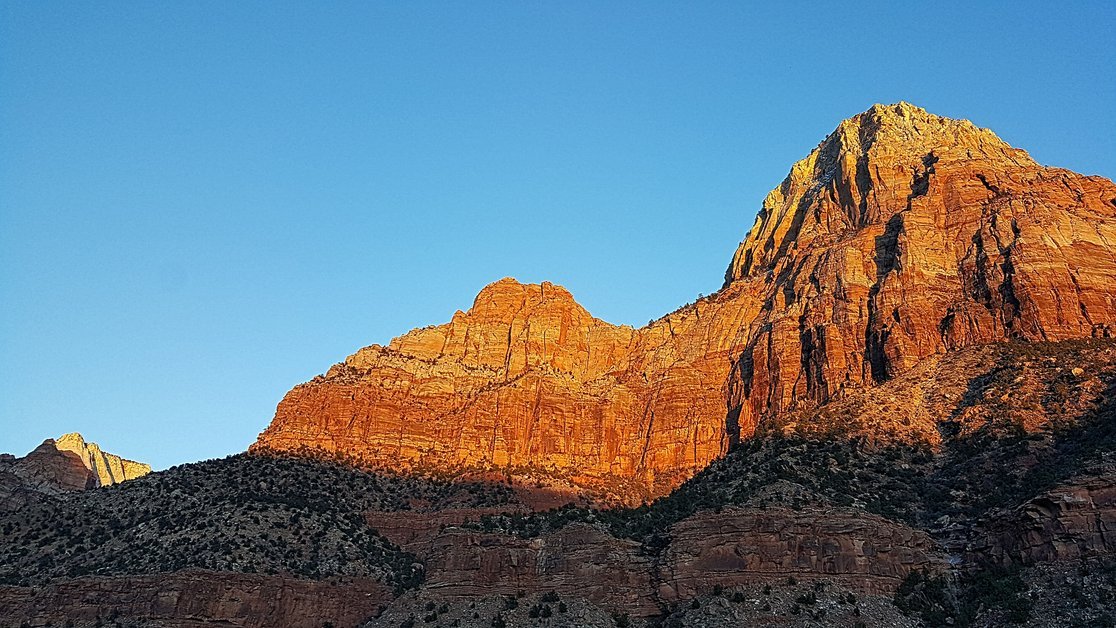
Caption: Bridge Mountain peaks above the main canyon and beckons serious explorers.
Parking inside the park fills quickly, so consider lodging in Springdale or using the town shuttle. This cuts down on the stress of finding a spot for your car. Our article on The Reality of RV National Park Campgrounds offers insight into what to expect if you’re touring in a larger vehicle.
Pet-Friendly Options in Zion
- Pa’rus Trail is open to dogs on leash.
- Other trails are off-limits to pets.
- Nearby towns offer boarding or pet-sitting services.
Zion’s rugged terrain and wildlife habitats make pet rules strict. While your pup can’t join you on popular trails like Angels Landing, Pa’rus Trail gives them a glimpse of the park’s beauty. This paved path parallels the Virgin River for about 3.5 miles round trip, offering scenic viewpoints. Bring water and bags for clean-up, as the desert heat can quickly stress both humans and pets.
If you’re set on exploring more of Zion’s challenging hikes, consider local pet-sitting options in Springdale. Some services let your dog play in safe, fenced areas while you tackle steep switchbacks. For a detailed rundown of dog-friendly tips, hop over to Our Adventure Taking Dogs to Zion National Park.

Caption: Even your furry friend can appreciate Zion’s dramatic scenery.
If you plan to compare pet policies across multiple parks, our guide on Taking Dogs to Canada’s National Parks in the Canadian Rockies gives you insight into traveling with pets in varied landscapes.
Planning a Wider Utah Adventure
- Combine Zion with other “Mighty 5” parks: Bryce Canyon, Arches, Canyonlands, and Capitol Reef.
- Factor in drive times; each park offers unique geology.
- Off-season months might offer reduced crowds.
Zion National Park is part of Utah’s Mighty 5, which also includes Bryce Canyon National Park just over an hour away. Many travelers like to explore these parks in one trip, hitting highlights like the hoodoos of Bryce and the delicate arches near Moab. Canyonlands and Capitol Reef are also within reasonable driving distance.
If you have a week, you can sample key points in each park: do a scenic drive, attempt a moderate hike, and learn about local history. Just be aware of permit requirements, especially in high season. If time allows, take advantage of shorter local hikes or scenic routes between parks so you can enjoy a wider range of landscapes.
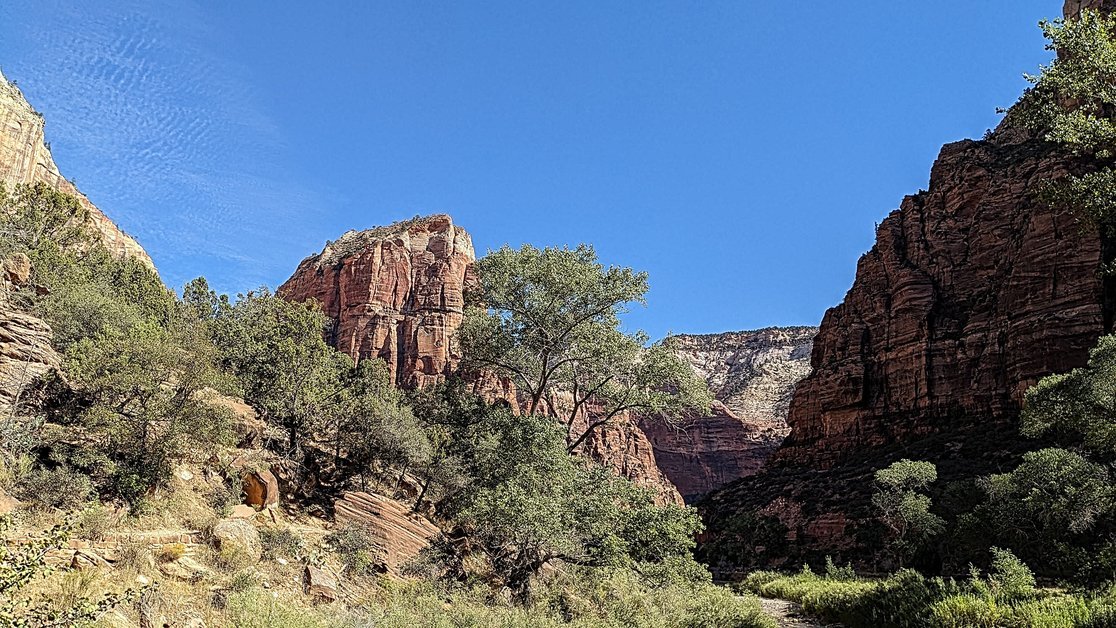
Caption: Sunrise light reveals the color layers that make Utah’s national parks so captivating.
For more detailed planning, see A Week Exploring the “Big 5” National Parks in Utah. This guide walks you through lodging tips, seasonal considerations, and daily itineraries to maximize your time. If you’re still deciding on destinations, have a look at how we Compare Banff and Jasper National Parks if cross-border travel is on your radar.
FAQ
1. How many people visit Zion National Park each year?
Over 4.5 million visitors pass through Zion each year, making it one of the top four most-visited parks in the United States.
2. Are dogs allowed on all trails in Zion?
No. Dogs are only allowed on the Pa’rus Trail on a leash. Other trails do not allow pets for wildlife and safety reasons.
3. Do I need a permit for Angels Landing?
Yes. Angels Landing requires a permit, which is granted through an online lottery. You should apply ahead of your trip to secure a spot.
4. What’s the best time of year to visit?
Late fall or early spring offers mild weather and smaller crowds. Winter can be quieter, but you’ll need to prepare for colder temperatures and possible icy trails.
Zion national park provides a mix of towering cliffs, unique geology, and diverse wildlife that appeals to hikers, photographers, and road-trippers alike. Whether you’re exploring the steep switchbacks on Angels Landing or strolling along the Pa’rus Trail with your dog, you’ll discover why this park stands out as one of Utah’s natural treasures.

